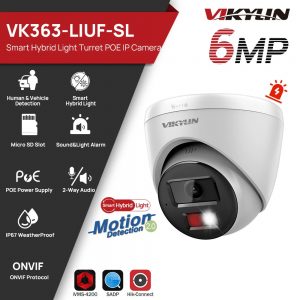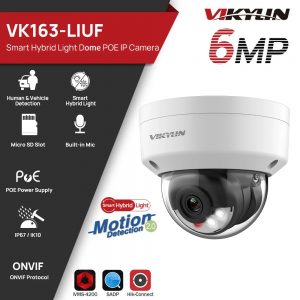In the fast-evolving world of surveillance technology, high-resolution cameras have become the norm. Among them, the 4MP IP camera has gained popularity for its superior image quality and detailed video capture. However, this higher resolution comes with the challenge of increased storage and transmission requirements. In this blog, we will delve into the two prominent video compression algorithms, H.264 and H.265, and understand how they help alleviate these concerns for NVR IP cameras, especially for indoor and outdoor home security.
Understanding Video Compression
Video compression is a critical aspect of surveillance technology, as it enables the reduction of file sizes without compromising on video quality. The H.264 and H.265 codecs are widely used in the surveillance industry due to their efficiency in compressing video data.
H.264 – Striking a Balance
H.264, also known as AVC (Advanced Video Coding), was a significant breakthrough when it was introduced. This compression standard efficiently compresses video files while maintaining good image quality. NVR IP cameras equipped with H.264 can achieve substantial storage savings, making them an ideal choice for many applications.
The Benefits of H.264 for 4MP IP Camera
When using 4MP IP camera for indoor home security, H.264 ensures that you can capture high-resolution footage without overwhelming storage space. The codec achieves this by identifying redundant data in successive frames and only transmitting the changes, also known as inter-frame compression. This process significantly reduces the video size, making it easier to store and transmit.
H.265 – Advancing Compression Technology
H.265, or HEVC (High-Efficiency Video Coding), is the successor to H.264 and takes video compression to the next level. This algorithm offers even better compression ratios while maintaining the same video quality, if not better. The enhanced efficiency of H.265 comes from its ability to analyze and encode data in more extensive blocks, a technique known as Coding Tree Units (CTUs).
How H.265 Benefits IP Camera DVR
With H.265, cameras for inside home systems can store much more video data than previously possible. This is particularly advantageous for indoor home security cameras, as they typically require continuous recording for extended periods. The advanced compression algorithm significantly reduces the storage burden, allowing users to retain more footage without the need for frequent data management.
Choosing the Right Camera for Indoor Home Security
When selecting the appropriate compression algorithm for your surveillance needs, it’s essential to consider several factors, including the camera’s resolution, storage capacity, and available bandwidth. Both H.264 and H.265 have their merits, and the choice depends on specific requirements.
In conclusion, video compression algorithms like H.264 and H.265 play a crucial role in mitigating the storage and transmission challenges posed by high-resolution surveillance cameras, such as 4MP IP cameras used in indoor home security. While H.264 strikes a good balance between compression and image quality, H.265 takes it a step further with even more efficient coding techniques. Integrating these algorithms into NVR IP camera and IP camera DVR systems empowers users with enhanced video storage capabilities, ensuring a seamless and effective surveillance experience.






